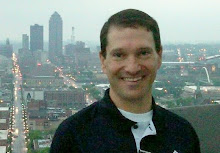Don’t you love the e-mails you receive from parents?
Perhaps a recent communication went a little something like this – “Coach, really appreciate the time and energy you put into the team. But I was wondering what the point was to that last drill you did yesterday at practice? It seemed a little disorganized. Maybe giving the kids more explanation as to the goal of the drill would help. Just thought I’d throw that out. Thanks again for all you do!”
And your knee-jerk response went something like “Well, you can certainly volunteer and carry a clipboard while I step out the way.”
As much as this communication can be annoying because you’re the guy who stepped up to be the coach, parents have a point in their expectation for a productive practice.
When we left off the discussion of the importance of organizing your practices for productivity, I said I would provide an example. It’s really not hard to do. If you’ve identified the areas of focus for the practice with your assistants, your job is almost done!
I type each practice schedule out and distribute it by e-mail to the other coaches on the day of practice. Here’s an example of a schedule I used recently for a 10-year-old baseball practice –
Practice Schedule – Athletics 10U – May 15, 2008
5:30 – 5:35 Opening comments/questions – word of the day - “DEDICATION”
COMMITMENT TO ACHIEVE A GOAL
Working on mostly fielding and baserunning again today.
5:35 – 5:45 Run field
Stretching
Agilities
5:45 -- 6:20 Fielding/Baserunning/Pitching Full group
Coaches Roche/Irlmeier go through situations verbally on fielding. Line up everyone in positions, talk through situations, then go live with fielding. Add base runners after 10 minutes. As we add baserunners, we can talk about signs and “holding” runners. Stress sliding – practice you’re “down” and you’re “up” commands.
Coach Hrd works with pitchers – Mason, Colin, Noah, Alec, Danny, Will and Michael.
6:20 – 6:45 Fly ball drill – two lines where one calls, the other backs up.
End with a game of “500” for fun.
6:45 – 6:55 Pick off moves
Parting comments -- Next practice – batting practice at Holiday Park Saturday before game – one hour before start time.
Word of the day – “DEDICATION”
Cheer drill (everyone says something positive about someone else)
Break Group
Everyone is then committed to knowing the direction of the practice, hopefully making productive use of your time as well that of the players, parents and other coaches. I ran across an article written by Coach Randy Brown that supported this philosophy along with some other great ideas for conducting practices --
http://ezinearticles.com/?Organizing-Your-Practice-Time---25-Time-Proven-Ideas&id=379920.
Next time, I’ll provide some rational behind each of the regular activities I include in a practice.
















